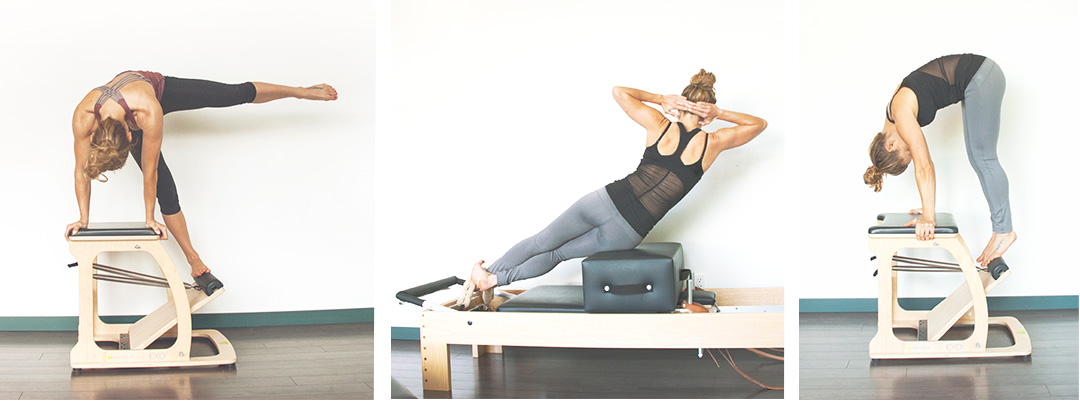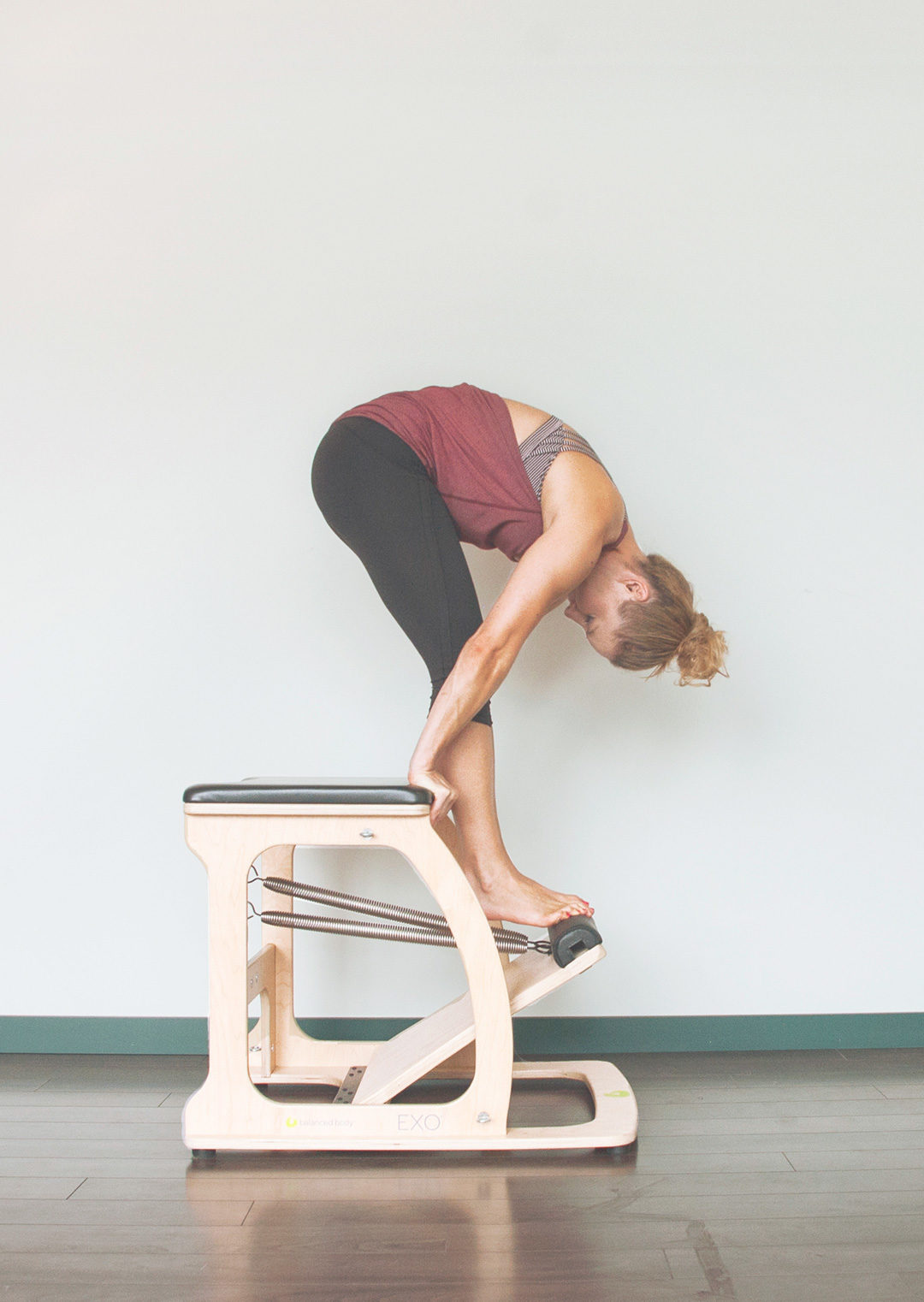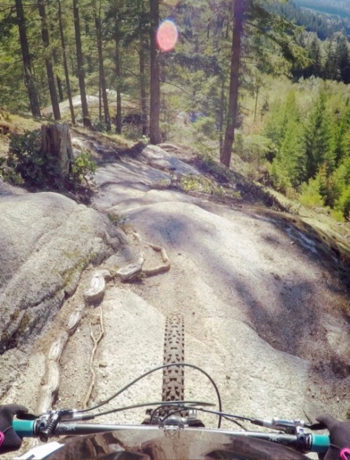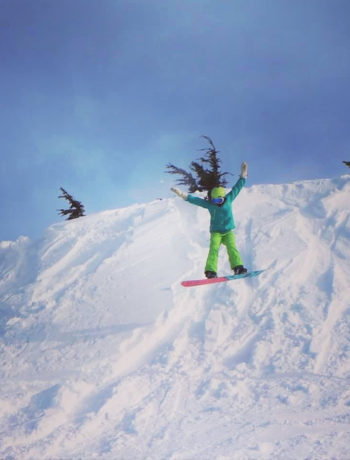Crash with grace
Whether you pitch yourself over the bars, slip off a skinny or send yourself wayward on a wet root, if you ride a mountain bike you’re going to crash once in a while…but, I have a secret practice for landing on all fours.
I’ve had a number of crashes, close calls and tricky situations that I know Pilates has saved me from. Whether it’s addressing posture, breathing, strength, flexibility, coordination or awareness, for over 10 years Pilates has trained me to work with my body as whole to increase performance and resilience. If you think Pilates is only for women and ballerinas, you’re way wrong my friend.
Everyone who believes Pilates is just an over-glorified stretching session, is missing out on a mind-blowing workout that’s nothing like yoga and is certain to give you a competitive edge, powerful strength, and Danny MacAskill-like balance and coordination!
Strong & Lean
In an effort to get ripped, it’s common for people to participate in concentric activities that tighten and shorten muscles—crossfit, bench press, bicep curls, squats, etc. While these indeed increase your buff-ness, they essentially decrease flexibility, thereby increasing the likelihood of injury, aches and pains.
One of the major benefits of Pilates is that you focus on eccentric exercises that strengthen while you lengthen; building a healthy, uniformed and lean muscular physique. Eccentric contractions are also more similar to what you do in your everyday life and in sports, such as descending stairs. This eccentric training in Pilates builds muscle that appears leaner and more cut—as opposed to bulky and stiff.
Mindful Movement
Unlike most other forms of exercise where the principle is building muscle or stretching, Pilates training takes things to a whole other level by being based on teaching you how to move. It’s functional and has a closer link to physiotherapy, where you focus on movement mechanics. Pilates also helps improve your movement patterns and muscle imbalances by engaging the mind to change the body.
Symmetrical Alignment
An imbalance in the muscles that support the spine can contribute to a myriad of athletic injuries and pain. The key to a well performing body is having a strong, neutrally-aligned spine. Many people have weak and poorly aligned spines, which causes all sorts of issues from a twisted pelvis and back pain to scapular imbalance and decreased-mobility—which all gets compounded when you start adding weight or repetitive actions.
As you develop your Pilates technique and continue to take part in a regular routine, you’ll find your body becomes more symmetrical. This symmetry will help take load of pressure points, ease pain and improve chronic low-back and shoulder issues.
Less injuries
Have you ever had knee pain after downhill skiing? Or perhaps you’ve experienced patellofemoral syndrome or runner’s knee? That’s often a sign of being weak eccentrically—and likely your physio would give you some eccentric rehab exercises to perform.
Pilates is incredibly beneficial to those that are experiencing joint pain as it provides the opportunity to strengthen muscles around the joint and increase joint flexibility—something you don’t get with standard weightlifting exercises.
Body Awareness
Most people, including athlete’s rarely think about how they hold their body. After several sessions of Pilates, you’ll start to become consistently aware of how you’re standing and sitting, and you’ll begin to notice the alignment of your body in space—posture and balance shifts from an unconscious to conscious act. This internal awareness will not only help you move more gracefully, you’ll learn to sense when something is not quite right in your movement.
Some studies have shown that the better you can balance, the less critical your strength is. This is because balance conditioning is a way to train the body to make better use of the strength you already have. You’re placing more emphasis on learning to move efficiently, with little wasted effort.
Here’s a great example of implementing your newfound body awareness. There’s an exercise in Pilates called “upside-down pushup” which teaches you to sustain an inversion while using your strength, remaining focused, aligned and calm. This particular exercise directly benefits you in situations where you might pitch yourself over your handlebars, because you’ve taught yourself to slow down your mind and take mindful action in a split second. Plus you’ll feel badass when you’re able to come out of a somersault unscathed and keep riding!

Improved Focus
Regular Pilates practice dramatically enhances your clarity and focus. By forcing you to simultaneously focus on breathing, balance, strength and movement, it takes a great amount of mental focus and concentration to coordinate these components and bring them into harmony.
A focused mind-body connection comes with increased precision, coordination, balance, stability and grace; this is the finesse of movement. This movement finesse will take care of the fundamentals and allow you to work deeper on skill refinement.
Your first Pilates session
Deciding to try Pilates can be intimidating. The equipment looks overwhelming at first sight, and strangely similar to torture devices, but don’t get put off! The awesome thing about attending a certified Pilates studio is the class sizes are often quite small (3-6 people), which means you get a lot of hands-on help from highly-educated teachers. You’re also going to receive lots of options for modification and working within the range that feels comfortable for your body.
When I say a certified Pilates studio, it’s because there are several variations and watered-down methods of Pilates out there. The key is finding a program that emphasizes rigorous teacher training and one that offers a variety of equipment classes. I recommend finding a teacher certified in the Classical Pilates Method, where you can rest assured these instructors have taken a 950 hour comprehensive teacher training program that takes 12 to 18 months to complete.
A few local Pilates studios I recommend:
Squamish
Core Intentions: coreintentions.com
Vancouver
Pilates from the Center: pilatesfromthecenter.ca
Surrey
Surrey Pilates: surreypilates.com
Sunshine Coast
Kalijo: kalijopilates.com





1 Comment
Emmanuelle Belanger
November 2, 2018 at 9:34 amYES!! to all of it. Thanks for that. I’m a RMT and I’ve been prescribing Pilates to my patient a lot lately, it’s good to hear it from other people too =) Super well written/explained. I also use Pilates myself for training and healing.